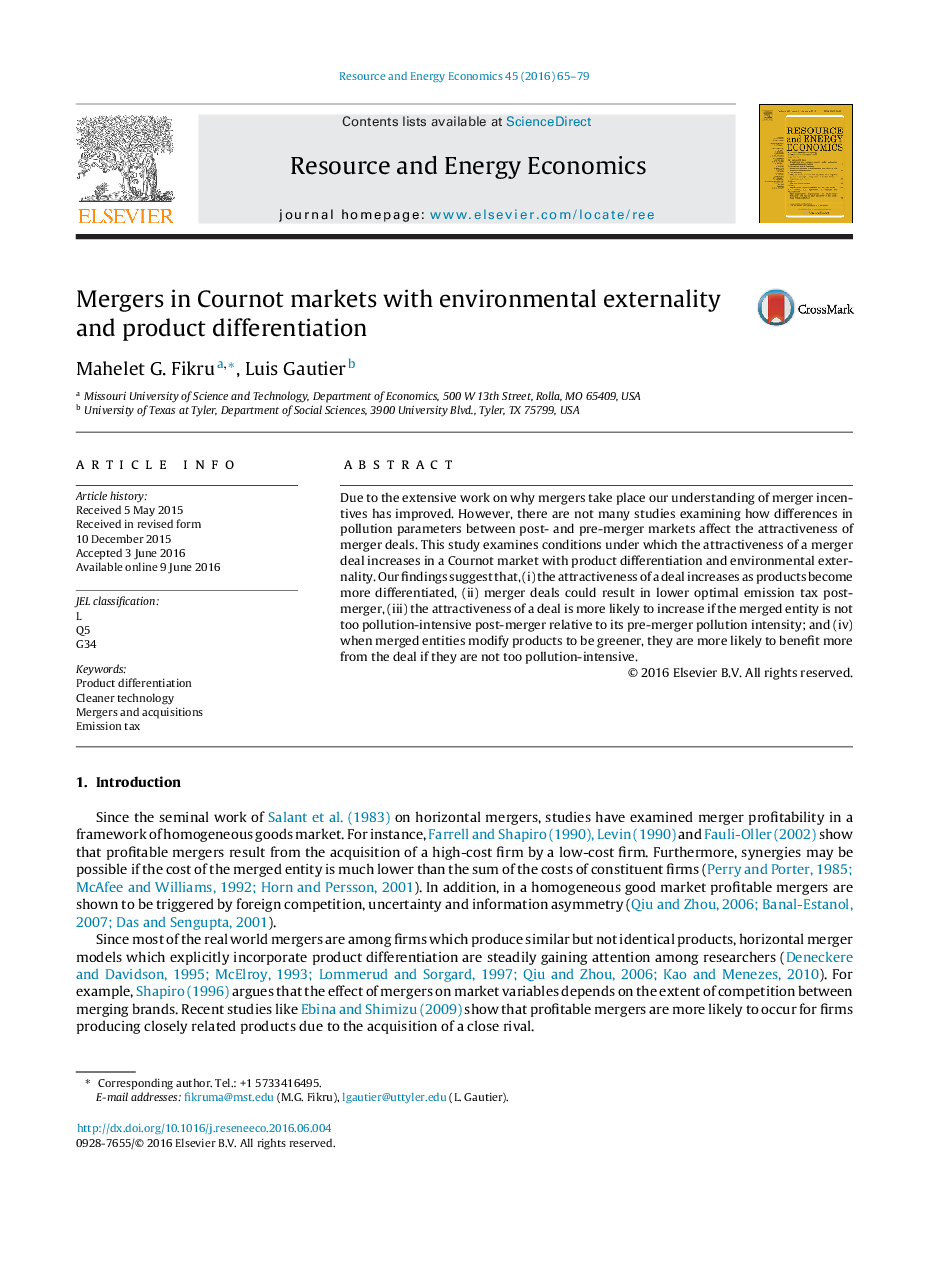| Article ID | Journal | Published Year | Pages | File Type |
|---|---|---|---|---|
| 985509 | Resource and Energy Economics | 2016 | 15 Pages |
•Mergers could result in lower optimal emission tax post-merger.•Mergers are more attractive if pollution intensity is smaller post-merger.•Merger attractiveness depends on greener modification of products post-merger.
Due to the extensive work on why mergers take place our understanding of merger incentives has improved. However, there are not many studies examining how differences in pollution parameters between post- and pre-merger markets affect the attractiveness of merger deals. This study examines conditions under which the attractiveness of a merger deal increases in a Cournot market with product differentiation and environmental externality. Our findings suggest that, (i) the attractiveness of a deal increases as products become more differentiated, (ii) merger deals could result in lower optimal emission tax post-merger, (iii) the attractiveness of a deal is more likely to increase if the merged entity is not too pollution-intensive post-merger relative to its pre-merger pollution intensity; and (iv) when merged entities modify products to be greener, they are more likely to benefit more from the deal if they are not too pollution-intensive.
